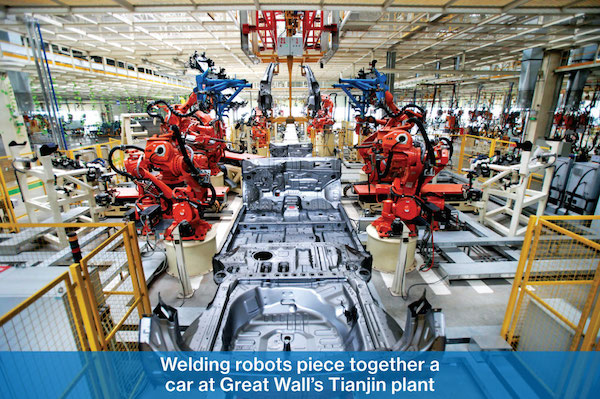
05/05/2015
Despite the extreme headline, the factory being constructed is not 100 percent robots with zero humans: rather, the aim is to cut only 90 percent of the facility’s workforce. Oh joy.Nevertheless, the headline shows the trend as it is envisioned by captains of industry from Beijing to Fort Worth. Human workers are a cost to be eliminated, and the robot-automation technology is here to accomplish that goal. However, the mass eradication of wage-earners (shoppers!) seems a tiny detail yet to be worked out.
Unlike many American reports about smart machines taking jobs, the Chinese paper gives hard numbers of how many workers are planned to be eliminated. The US propaganda organs prefer to overlook the social effect of the current workplace revolution, just as they have ignored the results on citizen workers of permissive immigration for decades.
Building work starts on first all-robot manufacturing plant in China’s Dongguan, South China Morning Post, May 5, 2015
Construction work has begun on the first factory in China’s manufacturing hub of Dongguan to use only robots for production, the official Xinhua news agency reported.
A total of 1,000 robots would be introduced at the factory initially, run by Shenzhen Evenwin Precision Technology Co, with the aim of reducing the current workforce of 1,800 by 90 per cent to only about 200, Chen Xingqi, the chairman of the company’s board, was quoted as saying in the report.
The company did not give a figure for the investment in the factory, but said its production capacity could reach a value of 2 billion yuan (US$322 million) annually.
Robots are set to take over in many factories in the Pearl River Delta, the area of southern China known as the ‘world’s workshop’ because of the huge export manufacturing industry there, as labour shortages bite and local authorities face the need to spur innovation to counter the economic slowdown.
Since September, a total of 505 factories across Dongguan have invested 4.2 billion yuan in robots, aiming to replace more than 30,000 workers, according to the Dongguan Economy and Information Technology Bureau.
By 2016, up to 1,500 of the city’s industrial enterprises will began replacing humans with robots.
The provincial authorities of Guangdong said early this year they would spend 943 billion yuan on replacing human labour with robots within the next three years. Cities in the province are handing out annual subsidies of between 200 and 500 million yuan to makers of robots and to manufacturers who install robots on assembly lines.
The provincial capital, Guangzhou, has set a goal of fostering a robot-manufacturing industry with an output value of more than 100 billion yuan by 2020, as well as automating more than 80 per cent of the city’s manufacturing production.
The government of the city of Foshan has said the value of its automation and robotics market would reach 300 billion yuan in five years.
Labour shortages have long troubled the Pearl River Delta region, though the situation has improved slightly in the past few years.
According to Guangdong’s labour department, in March 2015 after the Lunar New Year holiday, the province needed between 600,000 and 800,000 workers. That was about the same as in 2014 but less than the 1 million shortage in 2012.
In the same period in 2010, the shortage had been 2 million.
The period after the Lunar New Year is traditionally the time of greatest labour shortages since most workers in the province are migrants and many do not return to their jobs after going back home for the holiday.
This is a content archive of VDARE.com, which Letitia James forced off of the Internet using lawfare.